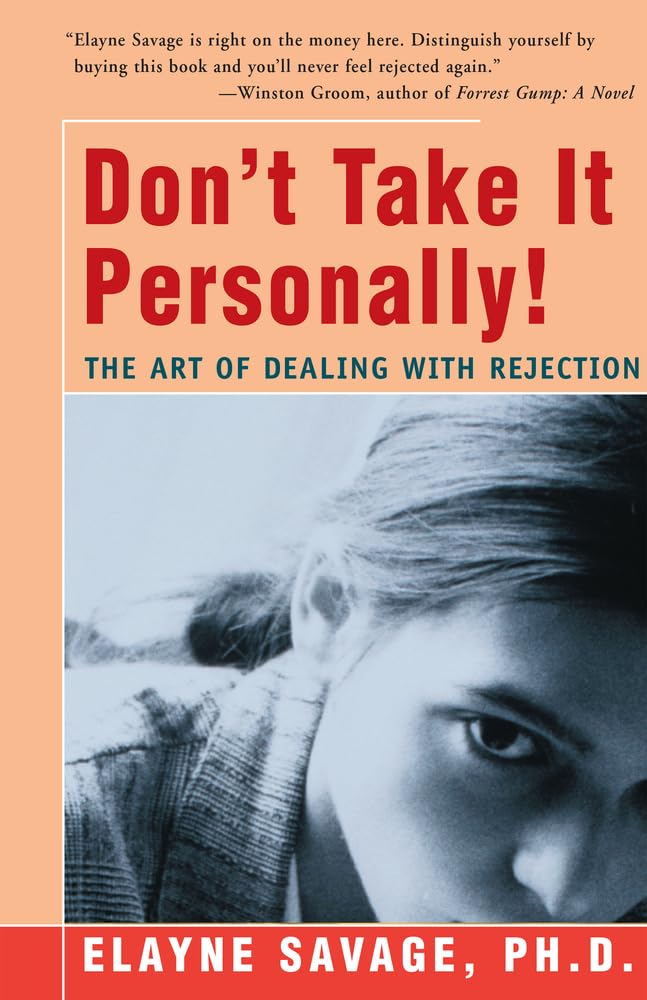By Elayne Savage, PhD
Accusations of name-calling, bullying and hazing within the Miami Dolphins has tackle Jonathan Martin AWOL from the team and guard Richie Incognito suspended.
The big-ticket item in the media is the racial slur and threats to harm Martin and his family that Incognito left on a voicemail message.
But there’s more. Now we hear that for months team members have been making derogatory comments including calling Martin "Big Weirdo." Some team members, including a coach, are being investigated for contributing to the harassment.
And the story keeps growing.
I started writing this blog the day the news broke, but held back from publishing because I couldn't keep up with the speed of details unfolding..
We hear a lot about bullying and harassment these days. Bullying has become the most dominant topic of today's media and social media. Opinions about workplace bullying, sexual harassment and cyber-bullying abound.
I know these stories are often blown out of proportion. I guess I've contributed to the bully-circus each time I've been interviewed on the topic over the years.
And yet public awareness of this problem is a good thing. The Miami Dolphins situation has inspired a national debate about workplace bullying.
“Sticks and Stones . . .”
I know how unsettling and horrific these experiences can be and how they can contribute mightily to someone's ability to feel safe and to trust others.
As a psychotherapist, workplace consultant and presenter I've heard hundreds of stories from clients and seminar participants about how workplace harassment frequently brings up early painful memories.
I've heard a multitude of examples about feeling victimized, degraded and humiliated by various bullying behaviors: hurtful teasing, name-calling, or mean-spirited practical joking from peers, teachers, teammates, parents, siblings, or extended family.
Both men and women are surprised that 20 or 30 or 40 years later just retelling the story brings back the pain and fear.
They begin to realize how much feelings of rejection and betrayal and issues of trust still affect their personal and professional adult relationships.
It does not take a highly-charged dramatic incident to cause long-term relationship problems. We all have different degrees of resilience and ways of responding to emotional triggers.
Maybe one reason the Dolphins harassment story is so fascinating is that it reminds us of our own experiences with bullying behavior. We can vicariously watch how others are handling it – or not handling it. Maybe we can even learn something.
Personally, I'm intrigued by the observations of various sports personalities:
Dallas Cowboys coach Jason Garrett describes how hazing has been part of the culture of the NFL for years. Vikings defensive end Jared Allen observes that it's "a rite of passage you go through." And others talk about "Tradition" and "The way things are done."
"The culture?" "A rite of passage” Tradition?” "The way things are done?”
Really? I've heard the same kinds of excuses made regarding the hazing in fraternities, some professional corporations, and the military – until zero-tolerance policies were initiated.
I remember how scared and miserable I was when I found myself in a hazing situation in college. I was calling my family in tears every day because it was such a horrific experience for me. It was surreal.
Looking back, I can see why it was upsetting. The hazing brought up earlier childhood memories – of the times I was mercilessly teased in school and felt singled out for humiliation.
And it also brought up memories of the frightening times I was bullied and tormented by a couple of older neighborhood boys. Mostly they were trying to scare me. There were times when it went beyond trying to scare me – when they put their hands around my throat and threatened to strangle me.
When I feel threatened and unsafe I have a visceral reaction with PTSD-like symptoms. Bullying and harassing will do it every time. Even teasing, whether obvious or subtle, can feel abusive to me.
Learning to 'Grin and Bear It'
Many of us learn to 'grin and bear it.' We don't tell anyone about what happened. We don't confide how humiliated and hurt we feel. We carry it around with us. Sometimes for years.
Then comes a time when we can't take it anymore.
For Jonathan Martin that day came when the team pranked him by all getting up from the table as soon as he sat down. Reportedly he slammed his tray, left the cafeteria and has not been seen by the team since.
Have you, too, had the experience of crossing that line from grinning and bearing to snapping when things get too hurtful?
I don't know if Ritchie Incognito intended to hurt Jonathan Martin when he used racist slurs and made those voicemail threats to Martin and his family. I don't know if the other Dolphins intended to be maliciously hurtful when they repeatedly called Martin "Big Weirdo." Would they claim it was only a term of endearment?
Some people think it may be Martin's degree in ancient Greek and Roman classics from Stanford and having parents, grandparents and great grandparents who attended Harvard that contributed to his team mates seeing him as ‘different.’
People tend to feel threatened by people, ideas and ways of doing things which are 'different.'
Why Do Bullies Bully?
When you think about it, bullies must not be feeling very good about themselves. If you take a good look, under that aggressive exterior you'll find a scared, hurting, ineffectual, vulnerable and insecure person.
When we feel vulnerable, we tend to protect ourselves. Some of us protect ourselves by taking a tough stance. Bullies need to puff themselves up to compensate – especially if they have a history of feeling victimized.
Sometimes taking a tough stance gets carried to the extreme. A line gets trampled when people behave in mean-spirited, inappropriate and hurtful ways.
Think about it this way: bullies puff themselves up at the expense of the other person. They have a need to diminish their target – to make the person squirm.
Bullies need victims. Many bullies also need an audience.
Yet, under that aggressive exterior of the bully is someone who most likely is scared or hurting. Blustery behavior is usually a cover for emotional pain.
Can you put yourself in the shoes of the bully? It evens the playing field a bit to remind yourself about what makes a bully tick.
And What About their Targets?
And what about the recipient of the teasing and bullying? How long can a person 'grin and bear' taunts and threats and shaming? When do they realize it’s not OK for people to be laughing at your expense? When do they acknowledge that it hurts?
It's hard not to take it personally when attacks feel so personal.
When a bully oversteps the bounds of appropriate behavior the response may be more than they bargained for. The bully blithely teases or harasses without knowing the history of their target's early experiences with bullying and how sensitive they may be. They don’t expect the kind of reaction they may get.
Bullying and repeated teasing are not just harmless jokes and pranks – there often are long-term effects.
I have no clue about Jonathan Martin's experiences growing up. However, when the bullying got to him, he found a way to escape the abusive barrage. He took care of himself by going AWOL and returning to his family.
Richie Incognito say he regrets the racist and profane language, but adds it stemmed from a culture of locker-room "brotherhood," not bullying.
He labels this conduct " a normal part of the locker room environment."
Really? Just a little locker room humor I presume!
I know well about "locker room humor." A couple of years ago I, too, was the recipient of some of it.
Someone who I barely knew in college decades later sent out a bullying and harassing email fabricating a story about me. Many of the dozens of alums he sent it to were appalled at his childish and sexist behavior and put pressure on him to apologize.
He complied by dismissively describing it as “an attempt gone bad of aggressive locker room humor. “
Like many others, I know too well how "a little locker room humor" can backfire.
I knew that I had to stand up for myself, using appropriate channels. Taking those steps was empowering and I needed that.
Perhaps Jonathan Martin feels the same way.
I made a decision to no longer tolerate this kind of inappropriate behavior in my life. Maybe Jonathan Martin made the same decision.
It takes courage to acknowledge feelings of shame and humiliation that come from being harassed and bullied.
I know how much courage it takes to take a stand.
Jonathan Martin chose to walk away. Leaving/quitting is certainly one option. So often we see things in terms of 'Either/Or.' Staying and 'taking it' or quitting and leaving.
There may have been other options available to him and I hope he tried them. One would be speaking directly to the powers that be to see if they would be willing to work with him to correct the situation. That's really hard to do, though, when the sport has a long history of closing their eyes to inappropriate behavior.
Does this story bring up memories of harassment, bullying or hazing for you, too?
Do you have a story to share?
And I'd love to hear your ideas about these kinds of abusive behaviors in general and the Martin/Incognito/Dolphins situation in particular.
© Elayne Savage, PhD
Until next time,
Elayne
I've written several blogs about the reasons for, the effects of and what to do about bullying behavior. Feel free to read and share these entries.
On Being 'Different'
http://www.tipsfromthequeenofrejection.com/2007/05/its_not_easy_be.html
On Shame and Humiliation:
http://www.tipsfromthequeenofrejection.com/2007/06/ive_never_felt_.html
On Cyber-Bullying:
http://www.tipsfromthequeenofrejection.com/2010/10/the-horror-of-it-all-repercussions-from-bullying.html
On Bullying in Politics, The Workplace, With Peers AND Some Bully-busting Tips:
http://www.tipsfromthequeenofrejection.com/2008/08/well-bully-bully-for-you—in-politics-the-workplace-with-peers.html
Feeling Dissed at Work? Here's How to Bounce Back
The Collection of Bullying Blogs from TipsFromTheQueenofRejection.com:
http://www.tipsfromthequeenofrejection.com/bullying/
Elayne Savage is the author of ground-breaking relationship books published in 9 languages.
You can order books and CDs directly from my website:
http://www.QueenofRejection.com/publications.htm
To order DON'T TAKE IT PERSONALLY! THE ART OF DEALING
WITH REJECTION from Amazon:
http://amzn.to/2bEGDqu
To order BREATHING ROOM — CREATING SPACE TO BE
A COUPLE from Amazon:
http://amzn.to/2ducIm3
REPRINTING THESE e-LETTERS
You can use the articles in 'Tips from The Queen of Rejection'®
as long as you include a complete attribution and, whenever
possible, a live link to my website. Please notify me where and
when the material will appear.
The attribution should include this information:
Elayne Savage, PhD is a communication coach, professional speaker,
practicing psychotherapist and author. To find out more about her speaking programs,
coaching and consultation services visit:
http://www.QueenofRejection.com or call 510-540-6230
AND if you or your group can benefit from how not to take
rejection so personally, let's talk about tailoring one of my
speaking programs for you.
Contacting Elayne
I welcome your feedback as well as suggestions for topics you'd
like to see addressed in this e-letter.
Here's how you can reach me:
Elayne Savage
elayne@QueenofRejection.com
510-540-6230
www.QueenofRejection.com
For more communication and rejection tips, you can follow Elayne:
Twitter@ElayneSavage


Leave a Reply to Deborah Edery Cancel reply